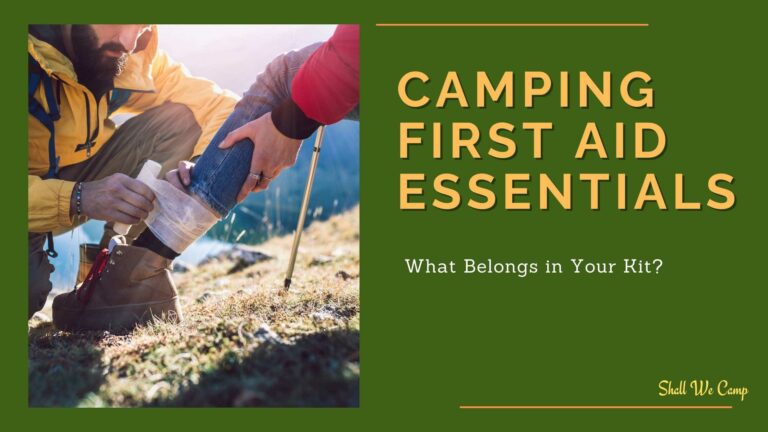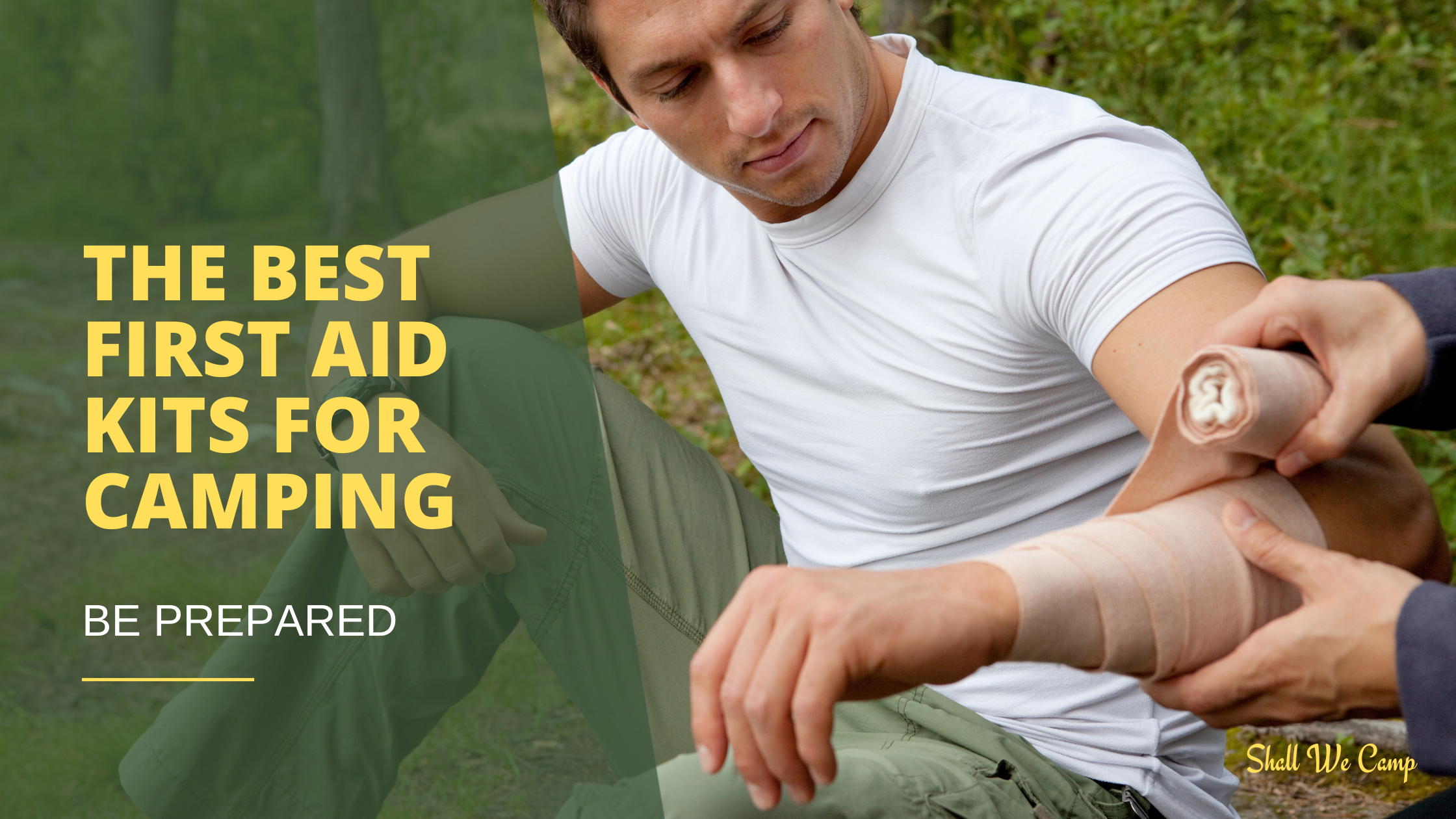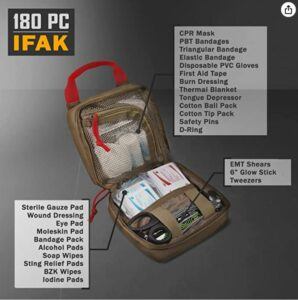When you're out in the great outdoors, whether you're hiking, backpacking, or simply enjoying the peacefulness of a campsite, it is essential to be prepared for the unexpected. A well-stocked camping first aid kit can be a lifesaver, providing the tools and supplies you need to address minor injuries and illnesses.
What is in a first aid kit for camping?
In this article, we'll walk you through the must-have items that you should have in your camping first aid kit. From basic supplies to medications and essential tools.
So, let's uncover the camping first aid essentials you should never leave home without.
1. Basic First Aid Supplies
The foundation of any effective camping first aid kit lies in its basic supplies. These are the items that come to the rescue in everyday outdoor situations. Here's a list of the essential items:
Bandages: Various sizes of adhesive bandages are vital for covering small wounds, cuts, or blisters. They provide protection and encourage healing.
Antiseptic Wipes or Solution: To prevent infection, antiseptic wipes or solution are a must. They clean wounds and minimize the risk of complications.
Adhesive Tape: Adhesive tape secures bandages and dressings in place. It's incredibly useful for keeping wound coverings intact during physical activities.

These basic first aid supplies are like the building blocks of your camping first aid kit. They address common camping-related injuries like minor cuts, scrapes, and blisters.
Next, we'll discuss the importance of including personal medications and additional essentials tailored to your individual needs.
2. Medications and Personal Essentials
While the basics cover general needs, it's equally crucial to consider personal medications and essential items specific to you and your fellow campers.
Your family or camping group may have unique medical requirements, so here's what you should consider including:
Personal Medications: If anyone in your group takes prescribed medications, make sure that you have enough supply for the trip. Check the expiration dates, and don't forget any necessary instructions.
EpiPen or Allergy Medications: For campers with known allergies, having an EpiPen or allergy medications on hand can be a life-saving measure.
Pain Relievers: Over-the-counter pain relievers like ibuprofen or acetaminophen can alleviate minor aches and pains, which can be a relief after a day of outdoor activities.
Now let's explore the tools and instruments that should be part of your camping first aid kit to handle any kind of situation that might arise.
Related Article at ShallWeCamp.com!
Check out this article about “The 5 Best First Aid Kits for Camping”
3. Tools and Instruments
Your camping first aid kit isn't complete without a set of tools and instruments. These items can be real game-changers when you're dealing with various camping emergencies.
Here's what to include:
Scissors: A pair of scissors is incredibly handy for cutting tape, clothing, or bandages. They are a versatile tool for many first aid and camping needs.
Tweezers: Tweezers are essential for removing splinters, ticks, or debris from wounds. They provide precision and minimize the risk of further injury.
Thermometer: A reliable thermometer can help you monitor body temperature, especially in situations where fever might indicate illness.
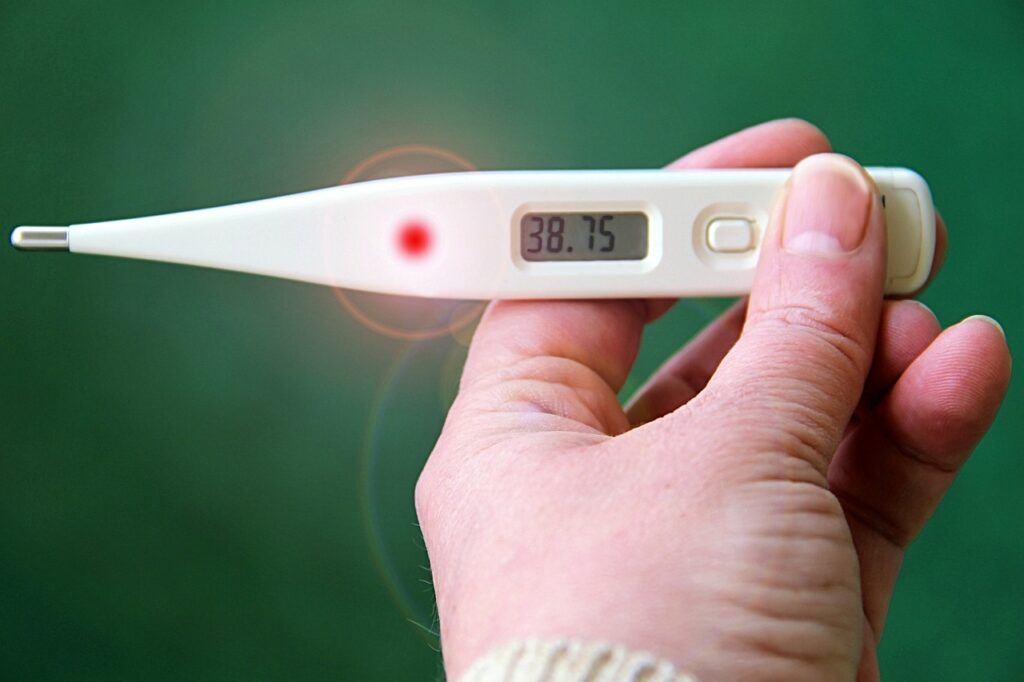
By including these tools in your first aid kit, you'll be well-prepared to tackle a wide range of medical and non-medical emergencies. Whether it's cutting tape, handling splinters, or checking for fever, these instruments can make a significant difference.
4. Wound Care
Proper wound care is extremely important in order to prevent infections and speed up healing. Here are the key wound care items that should be in your camping first aid kit:
Gauze Pads: Gauze pads are ideal for covering larger wounds. They absorb blood and other fluids, keeping the wound clean while it heals.
Sterile Dressings: Sterile dressings protect wounds from dirt and bacteria. Since they come in various sizes, they are very useful for everything from burns to more significant injuries.
Adhesive Bandages: In addition to basic bandages, it is a good idea to have various sizes of adhesive bandages. They are perfect for covering small cuts and abrasions, preventing further irritation.
Antibiotic Ointment: Applying antibiotic ointment on wounds helps prevent infections. It is a crucial step after cleaning the wound to promote healing and reduce the risk of complications.
Proper wound care and dressings should definitely be included in your camping first aid kit. This way you are prepared to handle minor injuries effectively and prevent them from becoming major problems.
5. Additional Safety Items
Apart from first aid supplies, there are specific items that can enhance your overall safety while camping. Consider including these in your kit as well:
Insect Repellent: This is a MUST for me since bugs absolutely love me! Insect repellent helps keep bugs at bay, reducing the risk of insect bites and potential allergic reactions. Look for a repellent that works against mosquitoes, ticks, and other common outdoor pests.
Sunscreen: Protecting yourself from the sun's harmful rays is extremely important, especially when spending extended periods outdoors. Choose a broad-spectrum sunscreen with a high SPF rating to shield yourself from sunburn.
Whistle: A whistle is a simple yet effective signaling device. It can help you alert others if you are lost or in an emergency situation, increasing your chances of being located quickly.
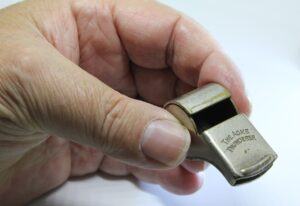
Including these additional safety items in your camping first aid kit can keep you well-protected not only against injuries but also from environmental factors like insects and sun exposure.
6. Customizing Your Kit
Now that we've covered the essential items for a camping first aid kit, it's important to understand that no two camping trips are exactly the same.
Customizing your kit according to your specific needs and the environment you'll be camping in is key to preparedness.
Here are a few things you should consider when customizing your kit:
Assess Your Camping Environment: Consider the location, climate, and potential risks of your camping destination. For example, camping in a desert may require more emphasis on sun protection, while forested areas might warrant extra precautions against ticks and insect bites.
Group Needs: Take into account the health and medical requirements of all campers in your group. Make sure you have the necessary medications and supplies for each individual.
Trip Duration: The length of your camping trip will dictate how many supplies you need. Longer trips may require more extensive stockpiles.
Activity-Specific Items: If you engage in specific outdoor activities like rock climbing or water sports, consider any additional items that might be needed for injuries related to those activities.
By customizing your first aid kit to your particular circumstances, you will be better equipped to handle any challenges that may come up during your camping adventures.
7. Maintenance and Regular Checks
Once your camping first aid kit is fully equipped and ready, be sure to perform regular maintenance checks in order to ensure that it remains effective and ready for use when needed.
Here's what you should do:
Check Expiration Dates: Periodically go through your supplies to ensure that nothing has expired. Replace any items that have reached their expiration date.
Restock Used Items: If you have used items from your kit during a camping trip, don't forget to replenish them. Always have a complete, fully stocked first aid kit before your next adventure.
Inspect for Damage: Inspect the kit itself for any signs of damage. Make sure it's still in good condition and that nothing has been compromised.
Review and Update: As your camping experiences evolve, the contents of your first aid kit may need to change as well. Review your kit's contents regularly and update it to meet your current needs.
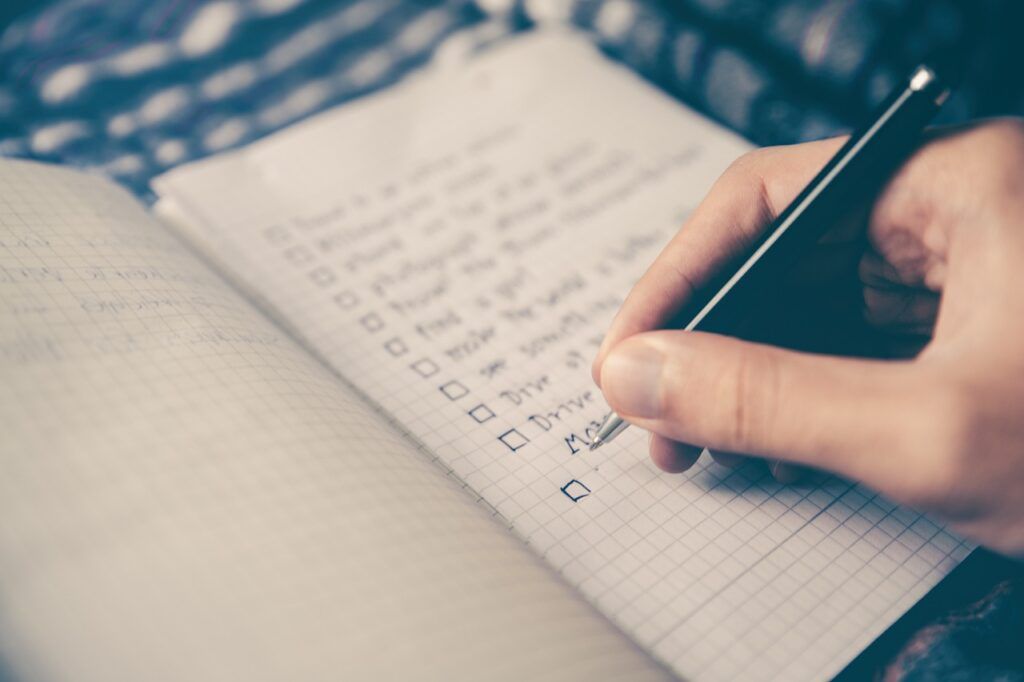
Maintaining and regularly checking your camping first aid kit is an essential step that shouldn't be ignored. Your kit should be ready and reliable anytime that you need it.
Conclusion - Final Thoughts
Being prepared for accidents and emergencies while camping is key to making sure your trips are safe and enjoyable.
Hopefully you now have a comprehensive understanding of the basic first aid supplies, personal medications, tools and instruments, wound care items, and additional safety essentials that you need to stay safe and secure during your camping excursions.
But don't forget to customize your first aid kit to your specific camping environment, group needs, and the activities you might engage in. This personal touch can make all the difference in an emergency.
And also remember to do regular checks and maintenance to your first aid kit so that it's always ready when needed.
Now, if you're looking for a high-quality camping first aid kit that covers all the essentials, consider checking out the Everlit 180 piece tactical first aid kit. It's been designed with the needs of campers like you in mind and offers a comprehensive selection of supplies and tools.
Safety is a priority, and having a fully stocked kit should be number 1 on your camping list. Stay prepared for not only your camping adventures, but also to assist others who may not have a first aid kit in their camping supplies.

